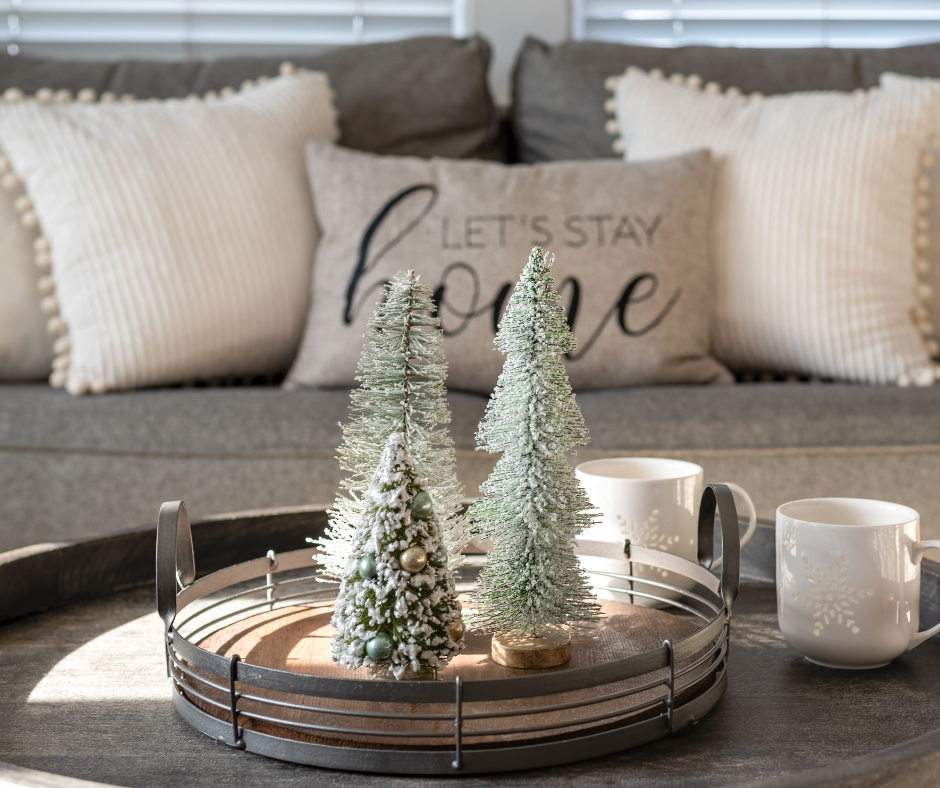Winterizing Your Home


Before 2021, Texans laughed at the thought of winterizing their home. After a few inches of snow, we quickly realized that Mother Nature is not to be trifled with. To avoid tens of thousands in repairs this year, follow these quick tips:

1. Protect Your Pipes
The biggest issue people face when temperatures drop is when a pipe bursts. This is clearly a bad day for multiple reasons. Not only is your house often soaked from this, but the repair costs are extensive. The easiest way to avoid this is to insulate any that could be susceptible to freezing. The most common lines come from your water spigots, so purchase a couple of these and avoid the headache. If you have an outdoor tankless water heater, PLEASE make sure that you get an expansion tank added. These were not standard in Texas before last year and almost every house without one had a major burst.
2. Seal the Cracks
Save yourself the increased heating bill and use this time to reapply caulk to your windows and replace your weather stripping around doors. It may not seem like a lot, but cold air creeping in or hot air creeping out can make a big difference when it comes to your already ridiculous electric bill.
3. Service Your HVAC
The last thing you want to deal with is your system going down in the Winter or the Summer. Use the mild months to make sure your HVAC is in tip-top shape. If you wait for the busy months, there’s a good chance you’ll be paying much higher prices while also having much longer wait times.
4. Utilize the Heat Pump
Most homeowners have never worried about manually switching on their heat pump. Many systems do this automatically, but if your system has a function called “EM Heat,” then there’s a chance you’ll have to manually turn on the heat pump. This is a secondary function to your unit that is less efficient but is necessary if outside temperatures drop below 35 degrees Fahrenheit for a sustained period. If we get those low temperatures, be ready to make the switch so that you don’t burn your unit out.
5. Hide Your Hose
We already mentioned insulating susceptible lines. If you leave your hose connected, you’ve essentially created an additional outdoor line with direct access to the inside of your house. Just disconnect it when it isn’t actively being used. Nobody wants to have to talk to insurance about how they bursted lines in their house because they forget to remove their hose.
6. Clear Your Lines
If you have a sprinkler system, Winter is not the time to use it. Let your lawn take in the natural rainfall and hit it with the hose if you need a little extra. Your sprinkler lines aren’t buried very deep, they hold water in them, and they link directly to your house… that’s a bad combination once temperatures start dropping as they’ll be some of the first to burst. Obviously, insulation doesn’t make sense, so just clear the lines completely. To see how to check out this video. We’ll be making our own for this soon.
7. Check the Fireplace
Most people probably don’t use their fireplace throughout the year until the Winter. Before firing it up, it’s very important to check and make sure there isn’t creosote buildup from the last uses or critters that have made your chimney home. Either of these options can create issues that can lead to an embarrassing or terrifying call to the fire department.
8. Clean the Gutters
Whether you have tall trees nearby or not, the fall tends to leave a mess of leaves and other junk filling your gutters. Make sure to clear these out so water can flow like it’s supposed to. If your gutters get clogged, you could have sitting water freeze in them or even have your gutters overflow entirely, completely defeating their purpose.
9. Store the Grill
It’s unlikely that you’ll be smoking or grilling over the Winter. Make sure to put that in a storage shed or in the garage because sitting in cold weather and rain without use may damage your unit. The last thing you want is a rusted-out grill once the weather starts to warm up again.
10. Inspect the Roof
Similar to your HVAC, the last thing you want is a roofer coming over during the busy months. It’s best to have this inspected prior to the season’s beginning because it’s a lot easier to fix any potential issues prior to the rain coming than it is to find out something’s wrong once the water starts dripping into your house.
If you follow these 10 easy steps, you’ll be ready to enjoy the season without worries. If you’ve decided Texas is the place for you and you’re ready to buy out here, give us a call or shoot us a message. We have agents available to help at any hour of the day.
If you’re looking for a change of scenery and need help selling your Texas home, we’re here for you too!

Categories
Recent Posts



![5 Tips When Looking for [City] Homes for Sale](https://cdn.chime.me/image/fs/cmsbuild/20231113/10/w600_original_abbe5ce5-5c33-4abb-8594-e871a2f6fd70-png.webp)


![7 Fun and Easy Housewarming Gifts for A [City] Home](https://cdn.chime.me/image/fs/cmsbuild/2023918/13/w600_original_ca2cb0e6-2f5b-4b0e-8f85-541223923cb5-png.webp)




